Agurong is a common black freshwater mollusk with elongated spiral shell usually found in abundance in creeks (waig) and rivers (karayan). We also call it leddangan in Nueva Vizcaya. It is similar in shape to the smaller and slender suso and the more smaller duriken. But agurong's meat is different from suso's or duriken's. Suso's is somewhat pumal-it or bittery. While duriken, well, you cannot even eat duriken's tiny meat as duriken is usually cracked and boiled or blanched just for its tasty, bittery soup. Nowadays, you can find agurong sold in the local markets, but suso shell is very rare. And I have yet to see a duriken for sale (when I was a young lad, in our place, we used to pick suso and duriken in a river nearby, and agurong in a creek a few meters away from our house).
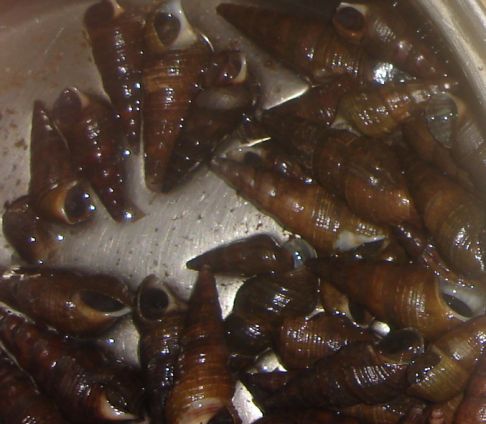
Agurong is cooked in a variety of ways. It can be simply boiled in lots of tomatoes and gingers and onions and with baraniw (lemon grass) just like tukmem (bennek, dukkiang, or bukkaig; small freshwater clams).
And it's perfect in coconut milk as well, just like leddeg or bisukol (freshwater black shells). And usually, with marunggay leaves, just like marunggay in crabs cooked with coconut milk. Using getta (ccoconut milk) may not be exclusively Ilokano, by the way, as it is more identified with Bikol cuisine. But Ilokanos do also love getta like in ginettaan (another term is "sinursuran") nga aba or taro leaves/stalks/root/shoots cooked in coconut milk.
So here's how I came with my agurong in coconut milk with marunggay leaves. First of all, prepare agurong by washing and rinsing it throughly (you do arasaw, just like rinsing any shellfish) and repeatedly until the wash water is somewhat clear. See to it also that you discard any dead agurong (dead ones usually smell and float).
Next, the cutting . You have to cut off its "tail end," the apex of its spiral shell. This is so it is possible for you to suck the meat out later (through your mouth or lips; mind you, eating agurong is a "lips-to-lips" activity, although you can pick the meat out by using a toothpick or the thorn of the sua or pomelo tree). Severing off the tail will let air pass to easily extract the meat out when you sultop (suck out) it. Use a large enough knife or preferably a bolo because the agurong's shell is thick and kind of hard.
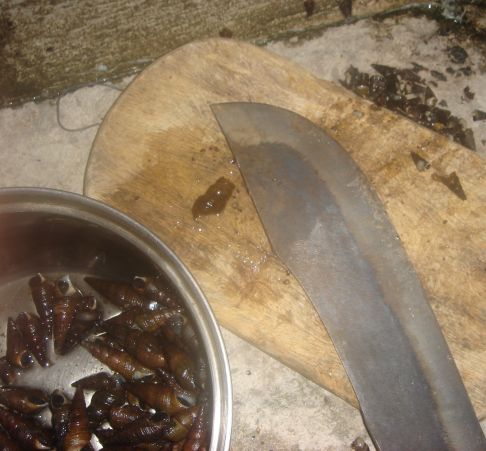
When you are through with the cutting, wash the shells again to discard shell bits and remnants.
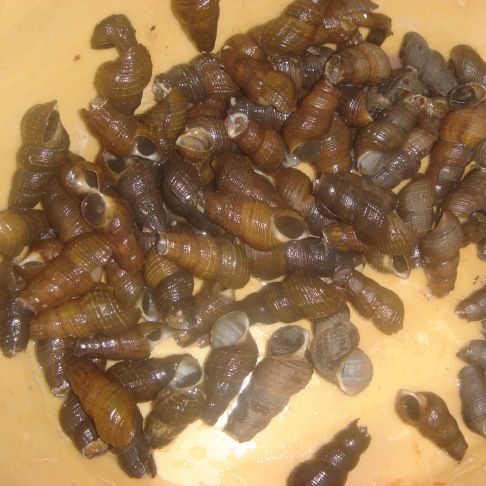
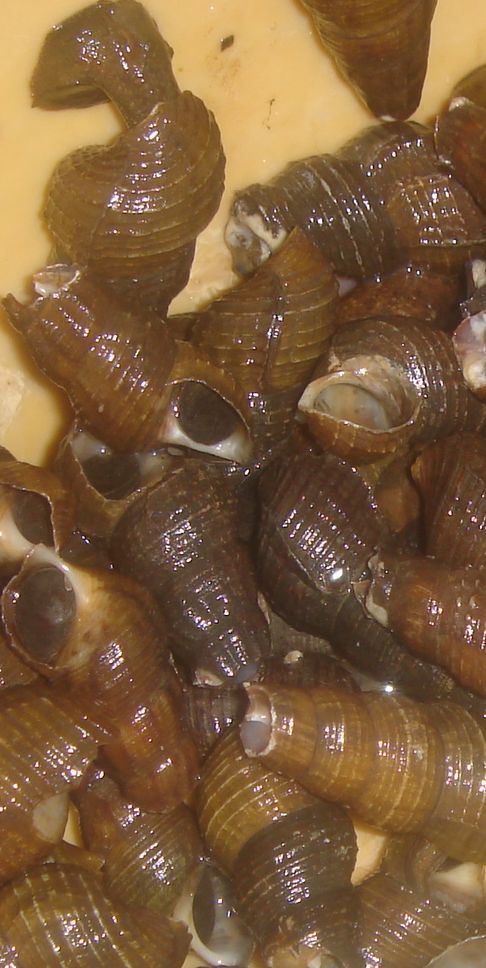
Then, the cooking. At this juncture, we assume you already have made the coconut milk earlier and the getta (gata in Tagalog) is ready (or if you prefered instant gata mix, you already diluted the coconut milk powder in water). Boil the getta for some time. Do not boil all the mixture, separate some amount of milk (preferably the first squeezeful or the umuna a pespes [kakang gata in Tagalog], if you made it from fresh coconut), about a cupful will do. While boiling you can blend in sliced onions, crushed garlic, and crushed ginger. Afterwhich you can now add in the agurong shells. Cook until tender (but do not overcook the shell, else the meat will "kumuttong" or become "thin" or shrunken). Season with salt. Just before you serve, add in the marunggay leaves and pour in the reserved coconut milk. Do not overcook the marunggay.
Here's the end result:
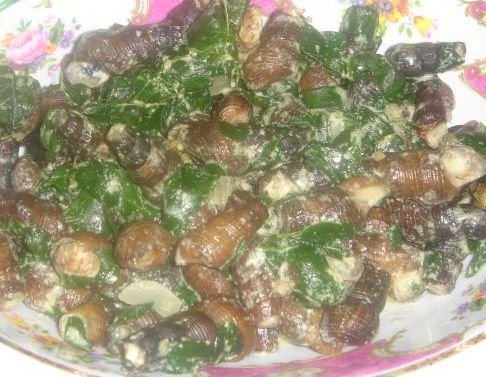
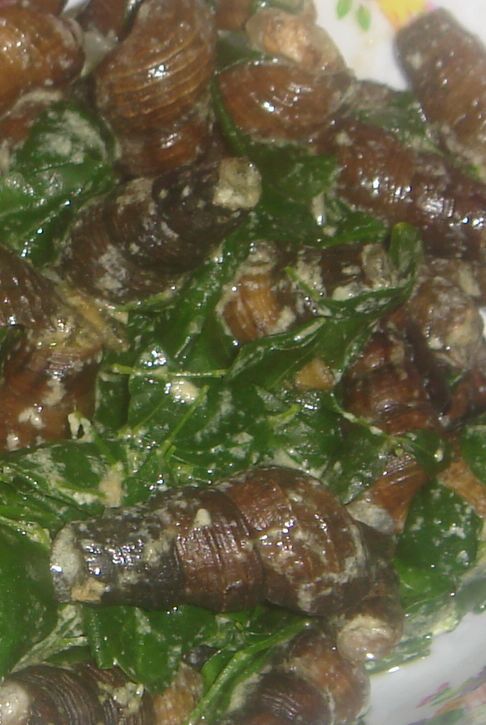
Ahh, what a plenty of sweety oily and fragrant lips to kiss!
(Originally blogged December 17, 2008)














Nagimasen, gayem ti kitta na pay laeng though I'm not good with the sultep but I use the fork to sukiten tay uneg na.
ReplyDeletethis is what we had for lunch today..sarrap.. it's saturday, market day, that's why we are able to bu and cook this as part of our weekend meals..hehe
ReplyDelete